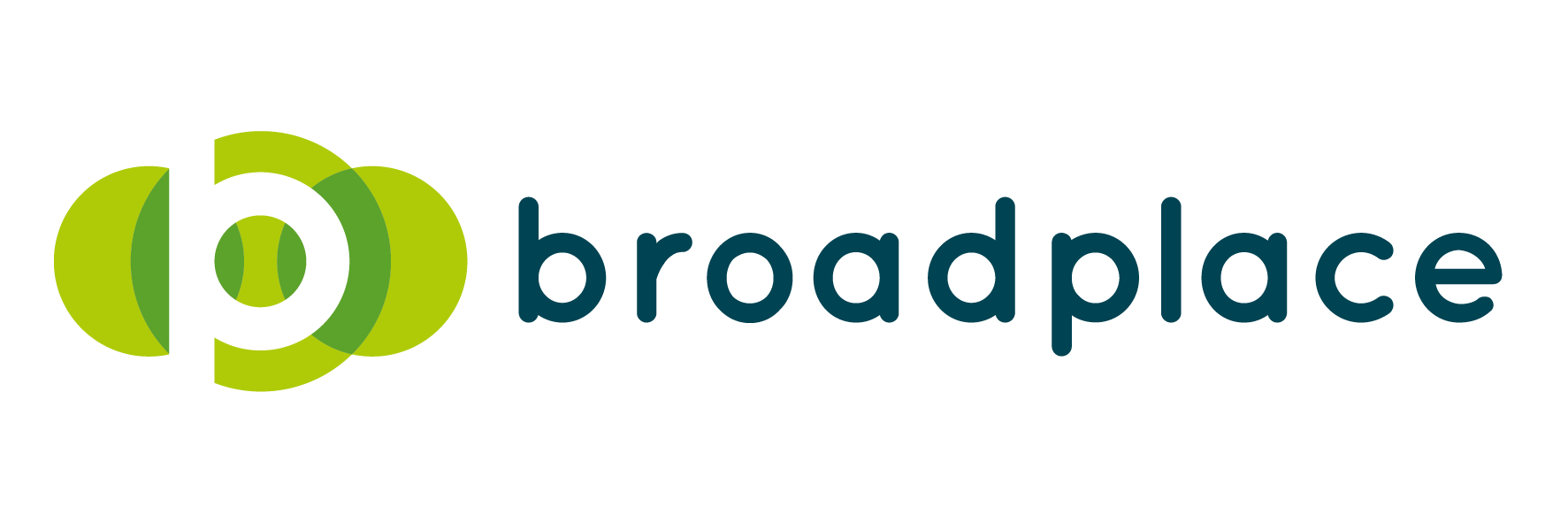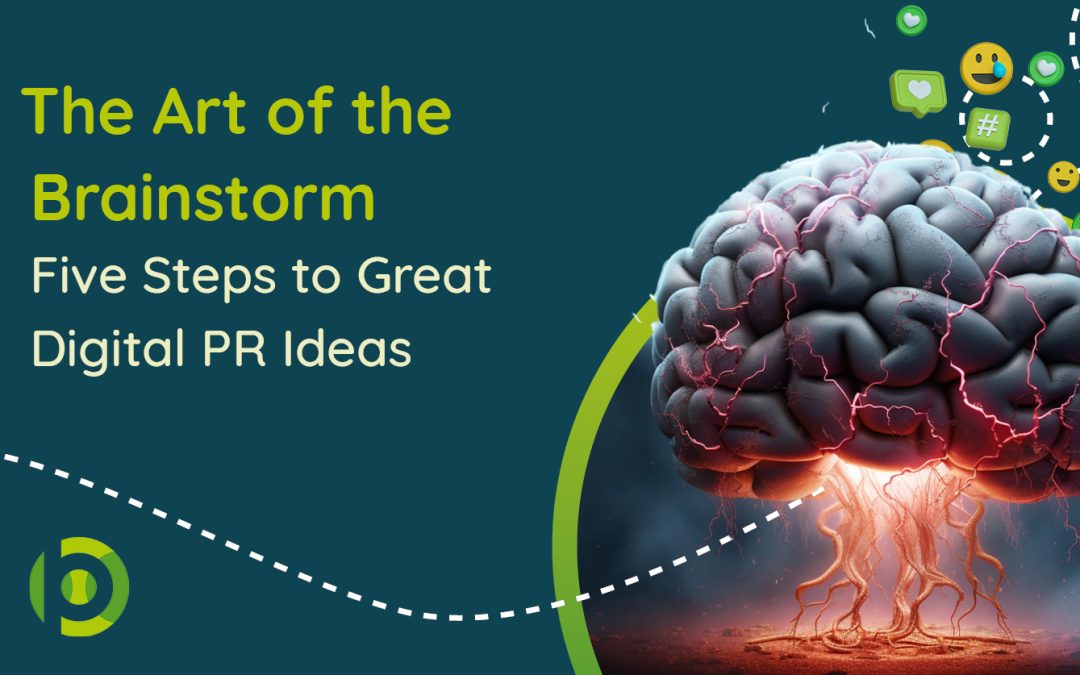Every great digital PR campaign starts with a brainstorm. In fact, you don’t need a brainstorm to be able to work that out. Successful digital PR campaigns take great planning, great thought and one free-flowing, creative brainstorming session.
In between the great ideas you’ll have many bad and average ones, eventually honing on that prize peach that’s going to earn you links galore and a pat on the back from your client or manager. That or an email saying “well done!”.
But how do you get to that point? And how can you shape a brainstorm into a position where you come out of it saying, “We’ve got some great ideas there…”?
Well, that’s all in the art of the brainstorm, and here are our five steps to ensure your brainstorms generate great ideas that go on to flourish as campaigns…
Step One: Creating a clear brief
They say there’s no such thing as a bad idea, and while that can be argued until the cows come home, there is such thing as a completely irrelevant idea.
Step one all begins with planning. Before a sticky note has even been released from its adhesive, those taking part need a clear brief.
Creating a briefing document can often be helpful in ensuring all the need-to-know information is clear. Within a briefing document, you should look to include:
- The campaign goals – what do we want to achieve?
- The target audience & publications – who’s going to engage with this campaign and where?
- Key topics or keywords to consider – do we want to push any products or services?
- Inspiration & what’s working in the space – what are competitors doing, and what style of campaigns and trending topics are working?
From there, people taking part in the session will be able to prepare for it accordingly, and even if they don’t prepare, they’ll have a much firmer idea of how it will play out and what they need to be thinking about during the session.
Step Two: Structure your brainstorm
So, your participants know what they’re brainstorming, they just need the platform to do it. Prior to the brainstorm starting, it’s crucial to create a clear structure to remain on topic and remain productive.
There’s no right or wrong way of doing this, with dozens of effective ideation techniques, it’s about finding the one that works best for the characters that you will have in that session.
Whatever the technique you use, there are usually key parts that every session includes:
- An intro and a recap
- The brainstorm
- Review and discussion
We’ll go through each of them individually later in the post.
A couple of things to be mindful of when choosing the structure of the session and the ideation techniques are:
- Are there some big extroverts in the session who will dominate the conversation? If so, it can be helpful to use a technique that will counteract that
- What’s the mix like between left-brain and right-brain thinkers? If it’s swayed too much to one side, then you may want to use a technique that brings out the other
- What setting are you doing it in? For example, some techniques don’t work as well remotely as they do in person and vice versa.
If you’re looking for a list of techniques that you can use, Hubspot has previously pulled together a useful blog post on brainstorming techniques.
Step Three: Intro & Recap
Within the intro and recap section, you should start the session by going over why everyone is here and what you want to achieve. After that, you should quickly run through the brief for those who may not have been as thorough in preparing for the session as others have.
We’d typically pull this together into one deck, as it can help to have a central point of focus for the room, and it can give you, as the host, something to fall back on.
Before getting started on the actual ideation, it can be useful to move them into a bit of a warm-up task to get the creative juices flowing.
It’s so, so vital to get everyone in the room in the right creative frame of mind for brainstorming. Jumping straight into the session can leave the room a little cold and awkward, and people may be a little more hesitant to put their ideas forward.
Therefore, engaging everyone before the ideation has even started will get them to relax and generate a more welcoming space for creativity.
Again, understanding your participants can be an important part of knowing how to warm them up, but there are tons of great activities and games you can play that get everyone talking, laughing and ready to go full steam into ideas generation.
A good tip is to centre the game on the core topics to be covered in the brainstorm. So, for example, if you’re brainstorming ideas for a sportswear brand, perhaps consider a game around sport. It’s all about people letting their guard down and getting people using their brains, being creative and embracing the company they are in and the task at hand. So, in the case of a sportswear brand, you might want to consider tasks, in teams or individuals depending on the size of the group, such as:
- Develop a new event for the next Olympic Games
- Create a completely pointless sporting product
- Can you guess the sports star from their trainers?
You really can be as madcap as you like, from quizzes to mini-tasks, alternative endings to alternative uses. The warm-up doesn’t have to last long, as few as five minutes is fine, with everyone running through their answers at the end of the warm-up.
Step Four: The Brainstorm
Running this section of the session is going to be dependent on what ideation technique you’ve decided to use and the environment you’re in. However, there are two key things that you need to make sure you do, whatever that is. They are:
Log All The Ideas
Whether you’re hosting the session remotely or in person, you need some way of keeping track of the ideas that people are coming up with.
If you’re in person, you can use a digital PR’s best friend – the trusty Post-it note – or even get someone to note them down on a whiteboard. If you’re hosting the session remotely it can be a little more tricky, people can use shared worksheets like Excel or Google Sheets or a tool like Miro, which is like a giant whiteboard that people can use remotely at the same time.
Create room for everyone to speak
Within your structure, the warm-up should have already allowed people to speak and, therefore will be comfortable in contributing to the brainstorm, but often, people can need to be given the opportunity to put forward their ideas.
There are several ways you can tackle this, but it’s so important that you do. You don’t want the idea that didn’t get put forward to be the one that would have earned you 50 backlinks. But so often, it can be the case, purely by allowing more confident figures within the group to take control.
One of the easiest ways to control the room and give everyone the opportunity to speak is the round robin. Simply go around the room and allow them to share their ideas. That way, everyone gets their say.
However, if the session is a little looser and ideas are flying around from all corners, also take a step back and take note of the people in the room who perhaps are struggling to speak out or have remained quiet. You’re the lead of the session, you have the ability to break up the play and ask someone their thoughts.
This can often be the case when more junior members of the team are involved, but their input and their opinions are just as valued, and if you show that, it can help them settle into a session, as well as be more comfortable speaking out in future sessions.
If you fail to do these two things, the session can descend into chaos, and you’ll struggle to remember what is going on, let alone walk away from it with ideas that can generate links.
Step Five: Collate your ideas and dig deeper
Finally, your ideas are down. You’ve sticky notes heaped onto a table, a Miro board full of input. It’s time to start refining those ideas.
This is where the hard work starts. Where you need to dig deeper, you’d be surprised by how many people take the top line of an idea and deliver it straight to a client or, worse still, go straight into running it.
It’s a recipe for disaster. In fact, it’s a recipe for no links and a client or boss who hates you.
At the end of the session, review all the ideas. You may even want to bucket them into various categories as some ideas complement others and either create one large idea, such as a study or provide you with a series of content pieces for a wider campaign.
Either way, discuss each idea and select between you which ideas you believe have the most legs.
When doing this, consider:
- Why do we like this idea?
- How relevant is it to the brand and the campaign goals?
- Does it suit our target audience and publications? If not, how can we tweak it to become that?
From there, you should have a short list of ideas you like that are ready to be scoped out before being sent to the client. Considering this article is the art of the brainstorm, we’ll leave out how to scope a campaign before pitching for another post.
In summary
Effective brainstorming is an art, and with these steps, you can ensure a productive session that generates actionable and relevant ideas for your campaigns if you make sure that:
- You’ve set a brief, and people have done their prep
- The session has a clear structure to it that suits those who are in the room
- You control the session and there’s room for everyone to contribute
- You review and select the ideas with the goals set out in the brief in mind
If you’re looking for some help with ideation or digital PR campaigns, then feel free to reach out to us via email. Or, if you want some more digital PR tips, you can check out our posts on how to make sure that your data is robust for a campaign and the best free data sources for digital PR campaigns.

